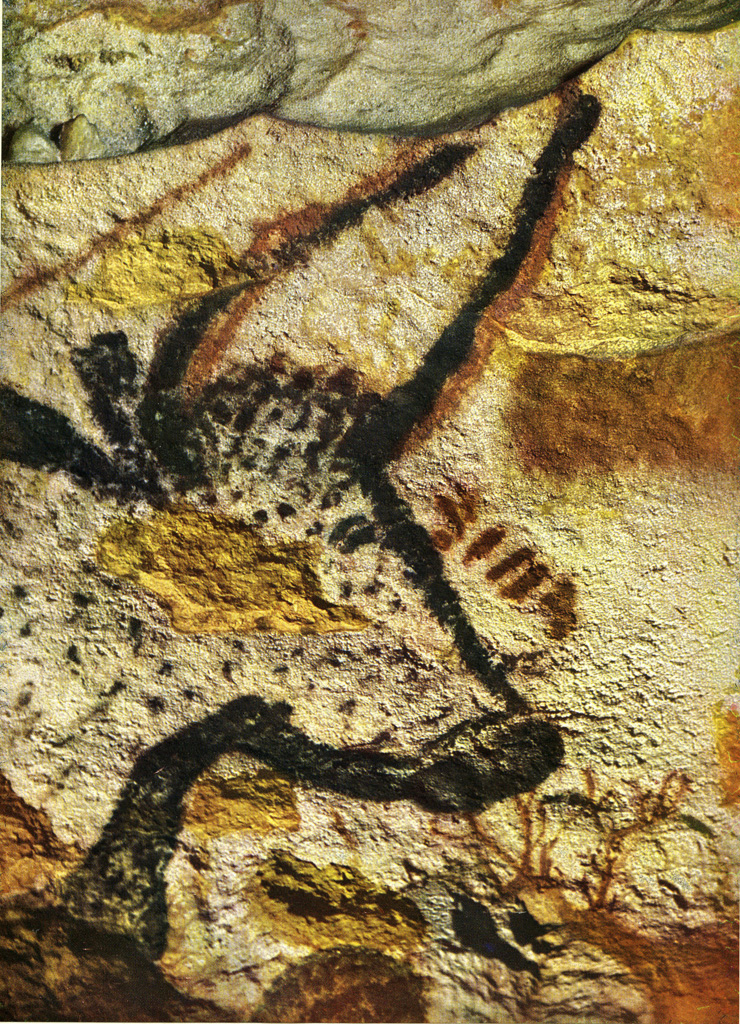Hunting Magic
If Paleolithic hunters were anxious about the success of the hunt, perhaps
the pictures were a ritual of pre-hunt magic. Pictures of large, healthy
animals were drawn to foreshadow a successful hunt. Ethnographic studies
indicated that nearly all modern day primitive societies had beliefs in
the supernatural (Lewis-Williams 131). This was the view held by Abbe
Henri Breuil, who dominated Paleolithic cave studies in the early 20th
century. With this theory, all the lines drawn through the animals seemed
to be spears. Any discharge from the mouth was blood. Besides paintings
of animals, the caves hold even more numerous abstract geometric signs.
These were interpreted to be weapons, nets and pits used in the hunt.
Images in the dark made magic in the light. Some caves have many small
broken tablets with engravings on them. Many images on the walls have
masses of lines engraved or painted over them. These were interpreted
to be images no longer needed if the hunt was successful, or images destroyed
if the hunt had failed. A story of hunting magic could be spun around
almost any image in the cave (Bahn 153).

Prehistoric Painting: Lascaux - or the Birth of Art, text by Georges Bataille, photos by Hans Hinz, Claudio Emmer. Albert Skira publisher, Switzerland, 1955.